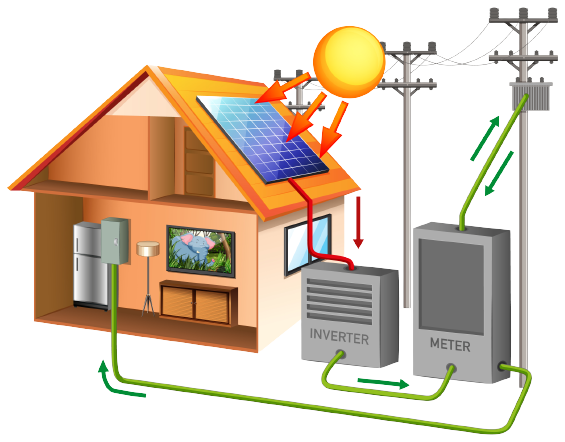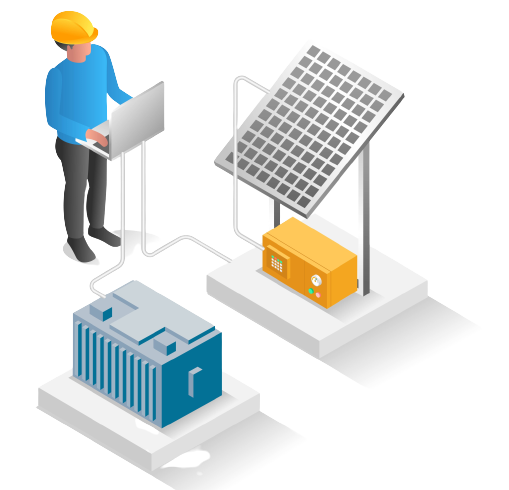

PV arrays must be mounted on a stable, durable structure that can support the array and withstand wind, rain, hail, and corrosion over decades. These structures tilt the PV array at a fixed angle determined by the local latitude, orientation of the structure, and electrical load requirements. To obtain the highest annual energy output, modules in the northern hemisphere are pointed due south and inclined at an angle equal to the local latitude.
Inverters are used to convert the direct current (DC) electricity generated by solar photovoltaic modules into alternating current (AC) electricity, which is used for local transmission of electricity, as well as most appliances in our homes. PV systems either have one inverter that converts the electricity generated by all of the modules, or inverters that are attached to each all PV modules.
Advanced inverters, or “smart inverters,” allow for two-way communication between the inverter and the electrical utility. This can help balance supply and demand either automatically or via remote communication with utility operators. Allowing utilities to have this insight into (and possible control of) supply and demand allows them to reduce costs, ensure grid stability, and reduce the likelihood of power outages.
Batteries allow for the storage of solar photovoltaic energy for Off- Grid tied Solar Roof Top, so we can use it to power our homes at night or when weather elements keep sunlight from reaching PV panels. Not only can they be used in homes, but batteries are playing an increasingly important role for utilities. As customers feed solar energy back into the grid, batteries can store it so it can be returned to customers at a later time. The increased use of batteries will help modernize and stabilize our country’s electric grid.

The electrical equipment used in a PV system is important in ensuring that the system operates at an optimal level. Energy meters measure electricity generated by the system, and this data is used in assessing facility performance. If required, they can also measure and monitor peak power output, reactive power performance and the system’s power factor setting. Many inverters are also able to record this data on an individual basis, allowing for performance monitoring of a portion of the facility. Data can be available for remote analysis, feeding into the facility’s control.
Exporting electricity to the grid: During periods where electricity generated exceeds that of the building’s demand, excess electricity could be fed back onto the grid. Local regulations should be adhered to, and special approvals may be required. The system should be designed to ensure that reverse feed is only possible when the grid is live. Health and safety becomes a concern during grid maintenance, when personnel may be in danger if grid connected generators are still generating electricity.

Solar energy is sustainable, renewable, and plentiful. As the cost of using solar to produce electricity goes down each year, many residential, commercial and industrial are increasingly and switching to solar. Now, there are over a million solar installations across the country. Below are additional benefits of switching to solar electricity.
